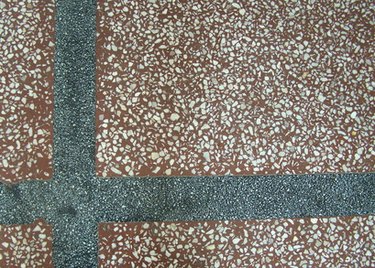Things You'll Need
94 lb. bag Portland cement
5 gallon bucket of sand
Water
5 5-gallon buckets of Styrofoam beads of various sizes
Concrete mixer

Porous concrete, also commonly known as pervious concrete, is a concrete material created with a high volume of interconnected voids. It's created much like traditional concrete, but substitutes a lightweight material in lieu of the sand. The resultant material is a stone with a open-celled nature that absorbs water at a faster rate, retaining it in the concrete itself or below the concrete in a bed of gravel. The process of water passing through the porous concrete actually aids in water filtration, removing some harsh chemicals and pollutants before the water returns the ecosystem. In addition to its filtration qualities, porous concrete makes for a lightweight building material that can be inexpensive to use.
Step 1
Pour five gallons of water into a concrete mixer. Add half of a 94-pound bag of Portland cement to the water, along with a five-gallon bucket filled with sand. Turn on the mixer and mix the contents thoroughly, creating a thin slurry.
Video of the Day
Step 2
Add a five-gallon bucket of Styrofoam beads to the mixture--the smaller the beads, the better. Mix the beads into the slurry until the beads are incorporated, absorbing the water and becoming soaked. Mixing times vary, but this should take no longer than two minutes.
Step 3
Add four more five-gallon buckets of beads to the mix. Mix the beads into the slurry with each additional bucket, mixing until the beads are soaked with the water. Add more water to the mix if it stiffens during the mixing process.
Step 4
Stop the concrete mixer when the last bucket of beads has been fully incorporated. The mix should have the qualities of low-slump concrete, being very thick while remaining easily pourable. Pour the concrete into forms as you would a traditional concrete mix.
Tip
Substitute pumice stone for the Styrofoam beads in the creation process if desired. You can also use any other naturally lightweight volcanic rock or plastic foam.
Video of the Day